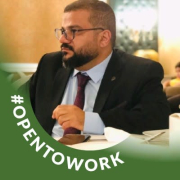It has helped us identify a lot of loopholes within our environment and mitigate risk. It has improved user experience as well.
The visibility into threats provided by the solution is amazing. If you have Sentinel, you can integrate it with Microsoft 365 Defender. You can then access all of the logs at once with a code. You would be able to quickly analyze and react to any threat.
We are able to prioritize threats with this solution. Depending on the type of license you have, you will be able to access different capabilities. We place very high importance on prioritizing threats because the easiest way to get attacked is through the user or the endpoint. You must have multiple layers of security.
We use several Microsoft security products such as Sentinel, Defender for Office 365, and Microsoft Defender for Cloud Apps (Cloud App Security). Microsoft has the highest form of integration, so these solutions integrate in a straightforward manner. Once Microsoft Defender for Cloud Apps is unlocked, you can connect to third-party applications as well.
These solutions work natively together to deliver coordinated detection and response. The threat protection that these Microsoft security products provide is comprehensive and very effective.
We use Microsoft Defender for Cloud and make use of its bi-directional sync capabilities. It gives us access to reports and makes reporting much easier as well.
Microsoft Sentinel enables us to ingest data from our entire system. Data ingestion is very important to our security operations because it makes it easy for us to know if there are any vulnerabilities or threats. It flags it, and we can analyze it and also create a query, which brings to light threats. We can then mitigate the threat or attack breach on the device.
Sentinel enables us to investigate threats and respond holistically from one place. It makes life easier for us and helps us not to be caught unaware. There are many forms of alerts that notify you immediately of any threats. You can set up automations, which might even fix the issue or mitigate the issue immediately without the need for intervention. That is, you can create a rule to automatically fix a particular problem.
Sentinel captures a lot of logs, and you'll be able to create action plans through the application to directly handle particular threats. The integration has been done already, so automatically it will send a signal to the environment or to the solution you have integrated with to carry out a particular action.
The cost of Sentinel is on the higher side compared to that of other standalone solutions.
We can automate routine tasks and write scripts to carry out difficult tasks, which makes things easier for us.
This solution has helped us to save 60% to 70% of our time.
Microsoft 365 Defender provides one XDR dashboard, so we don't have to look at multiple dashboards. In the Import Center, all you need to do is to select the solutions that you want, and it will give you multiple options on different categories and different data. It's amazing and straightforward, and you won't need to open other tabs.
We have been able to prepare for potential threats before they hit and take corrective steps. We can immediately identify users or systems that have viruses or malware. We can also find scripts that have errors underneath them. We can discover each element from the history and delete it. It covers a lot of aspects, and the integration with Sentinel helps as well.
Because there's someone actually monitoring everything, when there is a threat or any form of abnormality, all they would need to do is to create a rule or a query to create a particular section and add the action that needs to be carried out. It's easy to get to reports as well. Overall, the solution has decreased our time to detection and our time to respond by 60% to 70%.
Microsoft tends to provide too many features, which makes the solution prone to bugs.
Also, 365 Defender needs to be more flexible during deployment. When it comes to causal admittance, at times it seems slow.
We have been using this solution for about three years.
The stability is okay. Microsoft has evolved a lot, so they tend to make sure that the solution is up to date and up to par with best practices in the environment. They add new features as well.
The level of support you get depends on the knowledge of the engineer who has picked up your ticket. I'd rate technical support at seven out of ten.
The initial deployment is straightforward as long as you meet the prerequisites.
It doesn't really take a lot of time to deploy. All you need to do is to set up the policy, then assign the license to the users. Microsoft handles the maintenance of the solution.
Defender Plan 1 is tenant-wise, and Defender Plan 2 is per-user, which makes it more expensive. To have certain features, you would need to purchase the E5 license. For all of the capabilities that the tool provides, the price, though it can be high, is fair.
I don't think having a single vendor's security suite is the best because once the threat actors are in through the surface, it's easy for them to penetrate. This is because they'll know all the cracks in that particular product. However, if you have another vendor protecting you as well with a different signature database that is separate, then the attackers have multiple walls that need to be cracked.
An average-sized organization can go for the Business Premium plan. Larger organizations can go with E5, which comes with the full functionalities of Microsoft 365 Defender. Overall, I'd give this solution a seven out of ten.

















